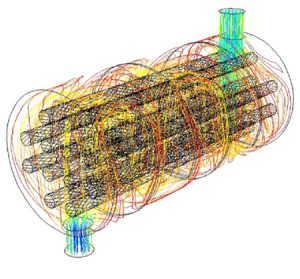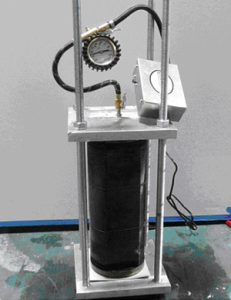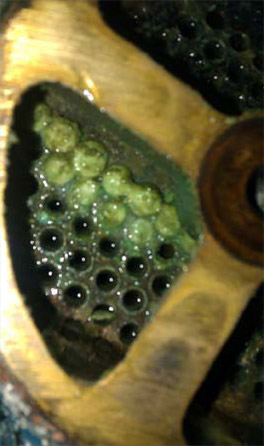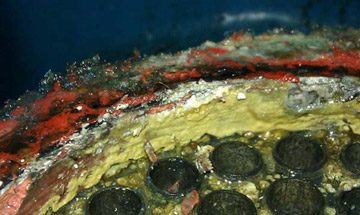Heat Exchangers
What Is A Heat Exchanger And Why Should I Care?
 A shell and tube heat exchanger is a class of heat exchanger that is typically found on a fresh water-cooled boat engine, its transmission and its genset. It is the most common type of heat exchanger. See diagram below.
A shell and tube heat exchanger is a class of heat exchanger that is typically found on a fresh water-cooled boat engine, its transmission and its genset. It is the most common type of heat exchanger. See diagram below.
As its name implies, this type of heat exchanger consists of a shell (a large pressure vessel) with a bundle of tubes inside it. One fluid runs through the tubes, and another fluid flows over the tubes (through the shell) to transfer heat between the two fluids. The set of tubes is called a tube bundle, and may be composed by several types of tubes: plain, longitudinally finned, etc.
In the case of the one’s found on your boat’s engines you have sea-water (also called raw-water) flowing through the tubes which cool the coolant (anti-freeze) through the cooling journals of your engine.
And, Why Should I care?

Because it is what keeps your engine from burning up from heat.
They do not last forever even with the best of maintenance.
Most have zincs to reduce corrosion. Some do not. If yours has zincs it is extremely important to know your heat exchangers appetite for zincs. It is the maintenance item that will allow you to maximize the useful life of your heat exchanger. Some eat up zincs in just a month to a few, where others may last many months. So it is very important that you keep a ledger to find out just how often yours requires new zincs. Furthermore, if they do not get changed often enough they can break into pieces, and plug up the tubes in the seawater side.
Once again, a few dollars in maintenance can save you hundreds if not thousands of dollars in repairs. However, if you have no idea just how long your zincs are lasting in your heat exchanger(s) install new ones, record the date you do this, and then check them every 30 or so days. Keep up this inspection schedule until you see that they are at 75% corroded away. Determine how much time has elapsed from the date you installed them. There… Now you know just when to be changing out your zincs in your heart exchanger(s).
What To Look For In A Bad Heat Exchanger
Below are obvious signs that you need a new heat exchanger even if it has not failed. Each photo has a caption, which describes the deficiencies.


